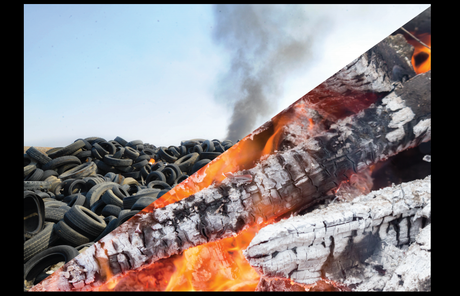 Everything on the planet has a calorific value - from food and appliances, to plant life and the waste we generate.
Everything on the planet has a calorific value - from food and appliances, to plant life and the waste we generate. As human beings, we consume food - all of which has a calorific value - then burn it off via a mix of exercise and the general processes which keep us alive, such as breathing.
The same analogy can be applied to the process of incinerators and waste; incineration machines are 'fed' with different items of varying calorific value, which are then burnt to create energy. This energy can then be used as electricity, or to heat water, for example.
What is calorific value of waste?
The official definition of calorific value is the amount of heat created by the combustion of a single unit - or particular weight - of an item.
What's key to understand, though, is which items have the highest calorific value, which are most combustible and which can be fed into incinerators to generate the most energy. Striking a perfect balance between these three factors will help determine which are the most efficient when it comes to calorific value.
Typically, the higher the calorific value of a product, the easier it will burn - but not all are safe to burn, and not all will produce a high amount of energy.
Soil, for example, has a very low calorific value. Only around a quarter of a kilo of soil is combustible and therefore very little of it will burn to create energy. However, burning it has a relatively low environmental impact compared to a product like a rubber tyre, which has a high calorific value but is unsafe to burn due to its rubber compounds.
Plastics, in general, tend to offer the greatest efficiency when it comes to calorific value and transforming waste to energy. Plastic items have high calorific values and when burnt, get very hot, very quickly. Therefore household waste treatment centres - which are tasked with using incineration to create energy - welcome the public to drop off their plastic waste; if they were simply burning organic matter, they wouldn't generate the amounts of heat required and their operations wouldn't be deemed a worthy investment of public money.
Calculating the calorific value of waste
Calorific values are usually determined in commercial laboratories, using calorimetric techniques - or calorific calorimetry - to burn gram‐sized samples of different materials.
When it comes to calculating the calorific value of a waste mix in order to make predictions of how much energy can be generated, you have to consider the composition of the waste being burned.
If a collection of waste includes a percentage of hazardous waste, medical waste and plastic waste, each of those categories would offer a different calorific value individually, and a collective calorific value overall based on how much of each is present in the waste mix.
Though incinerators are available which are designed to burn just one of these types of materials, most of today's large-scale incinerators - such as those used to manage community household waste - are designed to manage multiple materials at any one time, to optimise the amount of energy created from the waste.

What's safe to incinerate?
When using incineration to convert waste to energy, some items will perform better than others based on their calorific value, it will vary on size and moisture content, below you will find waste that is suitable for incineration.
These can include:
- Animal carcasses
- Hazardous waste
- Metal Materials
- Medical Waste
- Animal By Products
There are a large number of waste types that are completely safe to burn but there are also waste types that are not suitable for incineration due to their composition of materials. For a list of these waste types click here or use our contact page on our website here where one of our expert advisors can assist you.
There is legislation in place which directs these items should never be placed in an incinerator, due to the risks they pose to people and the environment when burned.
Should people be recycling waste that's high in calorific value?
No - if an item is high in calorific value, it's useful to incinerate it to generate the highest amount of energy possible.
A item with a low calorific value will - in the majority of cases - still be safely incinerated but to convert enough waste to energy, a huge amount of the item is required for burning so the process becomes, in turn, counterproductive.
To achieve the best possible outcomes, a pollution control mechanism is required with an incinerator burning anything that isn't on the D6 exemption list. Having this in place will release the maximum amount of potential energy from waste within the machine, generating clean air to be reused after a secondary burn.
To find out more about calorific value, and what you can do to get most efficiency from incinerating your waste, contact the Inciner8 team today on +44 (0) 1704 884020

